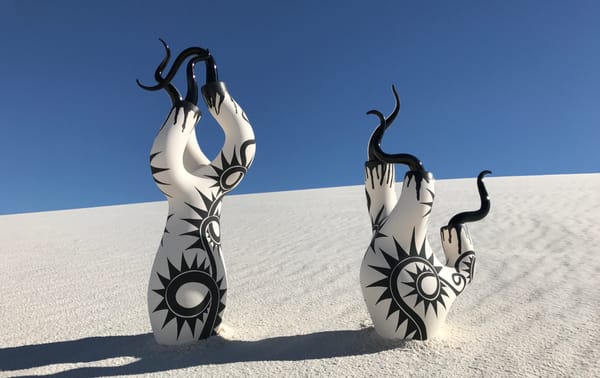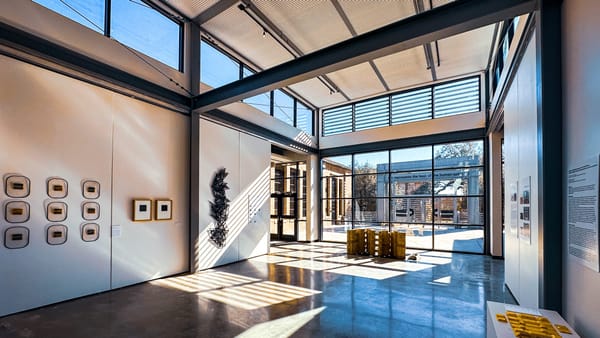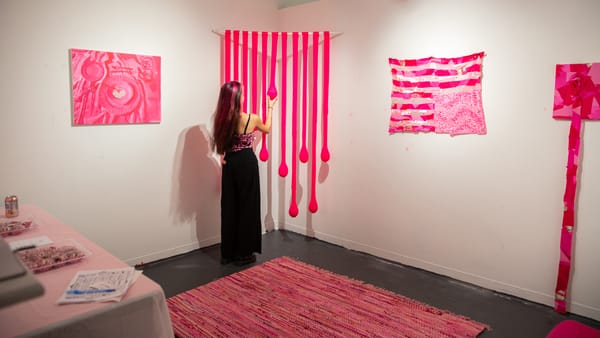Do It Yourself and Do It Well at Fountain Art Fair
Fountain Art Fair, now in its eighth year, continues to be the go-to Armory Week fair if you want see and buy art that's more alternative or DIY, less brand-name and thus less expensive than what you'd get at the Armory Show, or even Volta.

Fountain Art Fair, now in its eighth year, continues to be the go-to Armory Week fair if you want see and buy art that’s more alternative or DIY, less brand-name and thus less expensive than what you’d get at the Armory Show, or even Volta. Fountain makes no bones about being a fair, and its layout is typical: a huge space divided into straight rows of (mostly) white-walled booths. And many of those booths are crammed, salon-style, with art, as if this were the only opportunity to sell art all year. But the vibe is decidedly down-to-earth and honest — I saw a number of exhibitors with curtains, carpets, and armchairs — making it a refreshing place to look at art. (Although the electrical and lighting systems were not working properly, which meant some pieces were out of order and others hard to see well.)
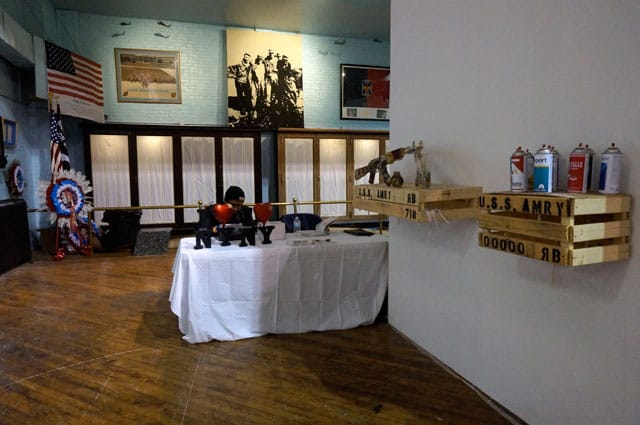
Starting three years ago, Fountain has been housed in the 69th Regiment Armory, which just happens to be the historic building where the first ever Armory Show took place, in 1913. That’s strong history to have on your side. It’s also still an active headquarters for the US 69th Infantry Division, which makes for some amusing juxtapositions: art mocking the US military 10 feet from a “flag of heroes,” plus a corner where a realist mural of fighting soldiers and a person-sized cross sit just outside the doors to a sprawling spread of decidedly non-realist and non-religious contemporary art.
One of the best things about Fountain is that booths are not limited to galleries. There are a little over 80 exhibitors this year, and nearly half of them are not galleries, strictly speaking: I saw single-artist booths, collectives, print shops, and nebulous noncommercial organizations and associations. This may account, at least partly, for the overall mixed quality of the work on view, but it also makes for a truly pleasant art-fair experience, as artists are often on hand and eager to chat about their work. Fountain requires but also rewards patience, as you sniff out the one or two or three good pieces in a booth bursting with art.
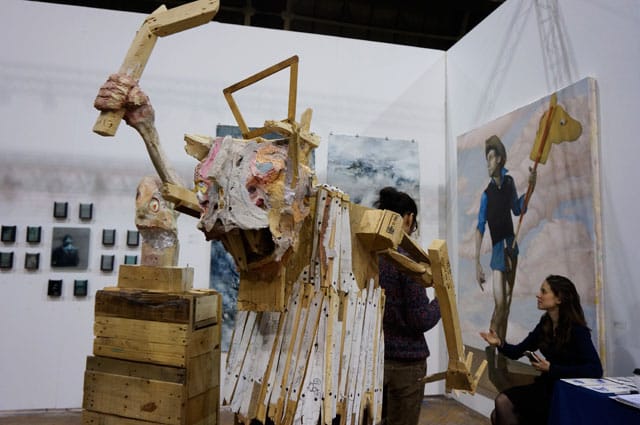
Some of the best work I saw today came from artist-run booths. Six alumni of the New York Academy of Art came together for a strong showing, with three of them — Nicolas Holiber, Guno Park, and Cory Dixon — standing out in particular. Holiber makes wonderfully strange junk art–inspired sculptures of creatures from rough pieces of wood and an array of other materials, including screws, graphite, pastel, acrylic, yarn, steel wire, and bone fragment. By contrast, Park had on view thoughtful figurative ink and charcoal drawings — the pairing of portraits of a man and an ape was especially evocative. And Dixon was represented by only one work, but the painting, of a cowboy without pants setting off on a journey with a stick horse, showed a lot of promise.
At the booth of Toronto’s 5 Star Collective, Ron Wild’s “OncoMap” (2012), a chromogenic print on panel, was the highlight — a beguiling digital-age scientific map of molecular structures, mathematical formulas, and much more floating in 3D space. Wild told me that he collaborated on the piece with mathematical physicist Joseph Geraci, whom he met while working in residence at a hospital, and Geraci’s parts of the work represent Geraci’s data.
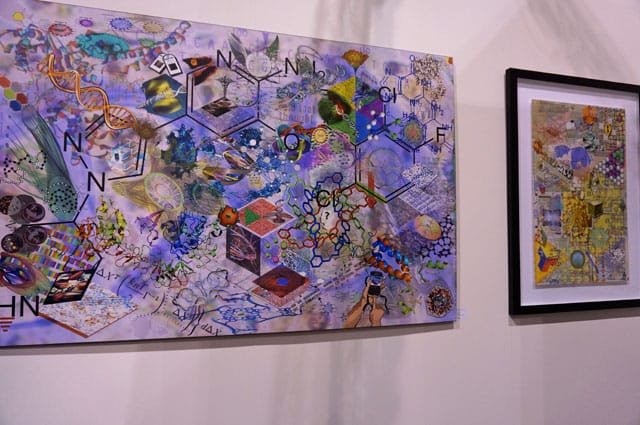
I also picked Cigdem Tankut’s work out of an overfilled booth by a collective named Hullaballoo. Tankut’s intriguing pieces featured different kinds and colors of fabric rolled and crammed together like artistic sushi. At another booth named Icons, featuring three artists, I loved Cornelia Jensen’s work, particularly a series of small-scale mixed media pieces featuring feathers, computer circuitry, animal bones, and ladybugs. (Asked if they were real ladybugs, Jensen responded, “Anything you see that resembles an insect is an insect, except for the paintings.”) The works had a shamanistic quality to them and, coupled with her landscape paintings of the desert, made for a strong meditation on her (and our) relationship to the land.

Also thinking about the environment, albeit in a more dystopian way, was Marcia Cooper, who filled a booth with an array of her own work under the title “Post Nature Art.” Cooper had mostly photographs on display, the twelve in the Resistance Shelter series (actually six photographs, each one presented in color and black and white), of decaying found structures, being the most powerful. For three other pieces in a series called Lost Site, Cite, Sight, Cooper took prints of digital landscape photographs and wrinkled them awkwardly over stretchers, creating a perhaps overly literal but still effective disruption in our notions of natural purity. In a different but decidedly related vein, a work by Sophia Narrett at the booth of Arcilesi | Hombers Fine Art dismantled the idylls of a kind of Garden of Eden (whose overall shape vaguely resembles the US) with glee. Titled “An Origin of Dolls,” the piece made from embroidery, yarn, and acrylic is vigorously messy and frayed, its edges coming apart as if Narrett were still steeped in the process of creation.
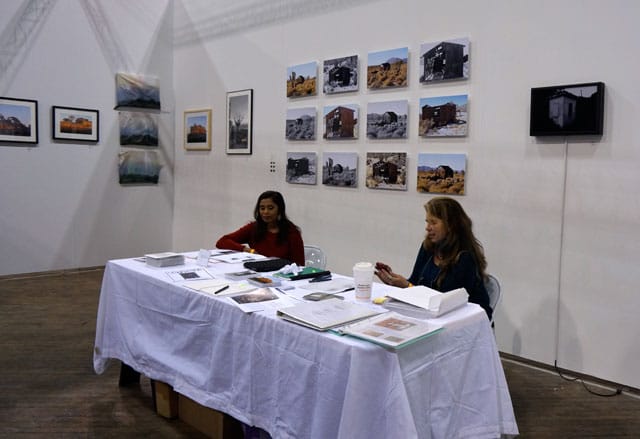
Other galleries with strong booths included Calico, where Kate Nielsen’s staccato acrylic-and-enamel-on-board paintings were not only amazingly crafted but also nearly laugh-out-loud funny in their mocking of survival guides and tips (e.g. “Survival Tip #14: Stampede,” which simply shows people running from a stampede). At Front Room Gallery’s booth, also great, Stephen Mallon’s dramatic photographs of retired New York City subway cars tossed into the sea were similarly apocalyptic.

And I would be remiss not to mention another local gallery, Grace Exhibition Space, which has programmed performance art at Fountain all weekend long. That will include a number of artists working on a main stage, but this afternoon, in an otherwise empty booth, Sophie Dupont sat at a white plastic folding table carefully etching marks into copper plates. The piece, which Dupont will be performing for the duration of the fair, is called “Marking Breath,” and it features the artist marking her every breath with a single stroke. Her pace was slow, and she exuded a marvelous sense of purpose that seemed to block out all the noise and fuss that mark the opening of an art fair. Visitors seeking respite, find her there.



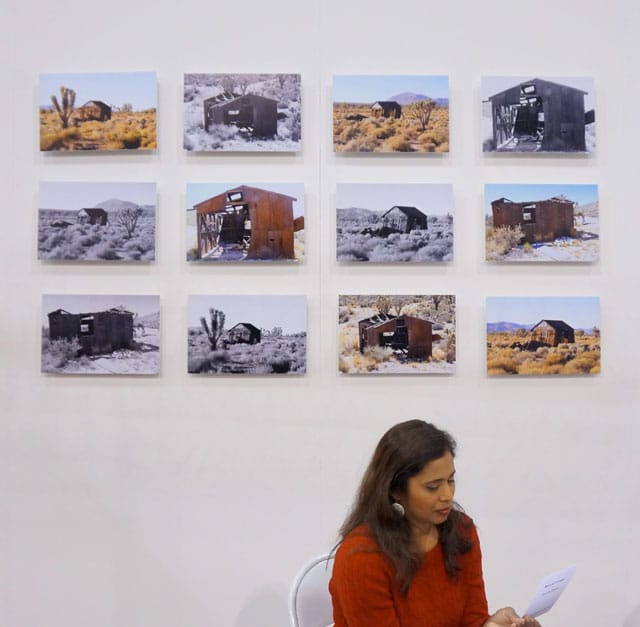
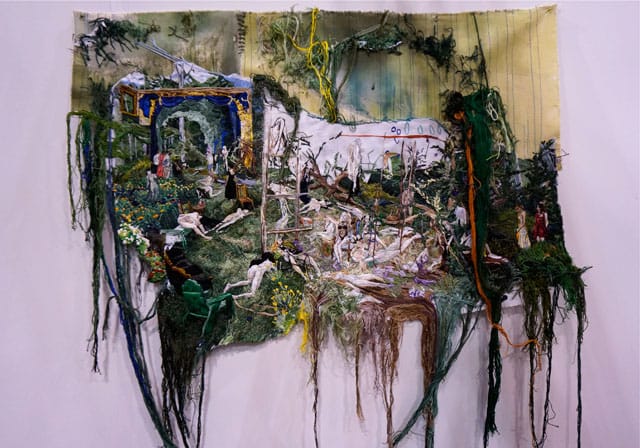

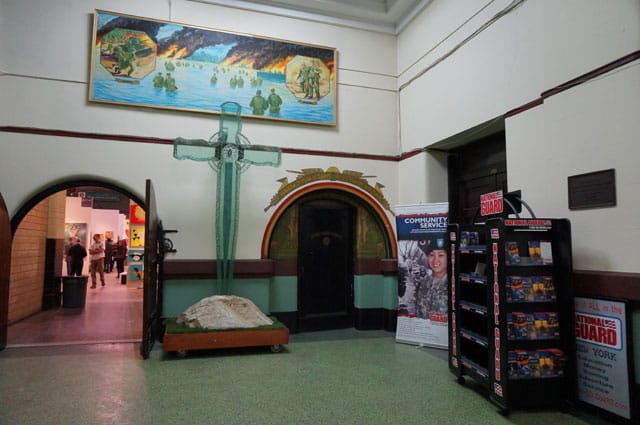

- Sophie Dupont performing “Marking Breath”
Fountain Art Fair continues through March 9 at the 69th Regiment Armory (68 Lexington Avenue, Kips Bay, Manhattan).

